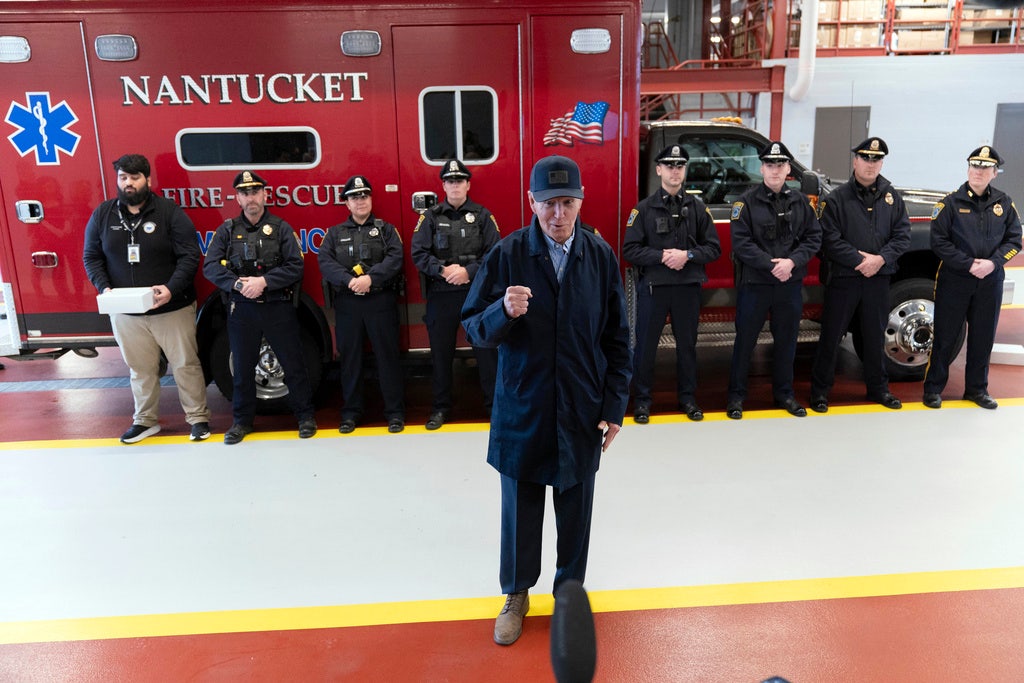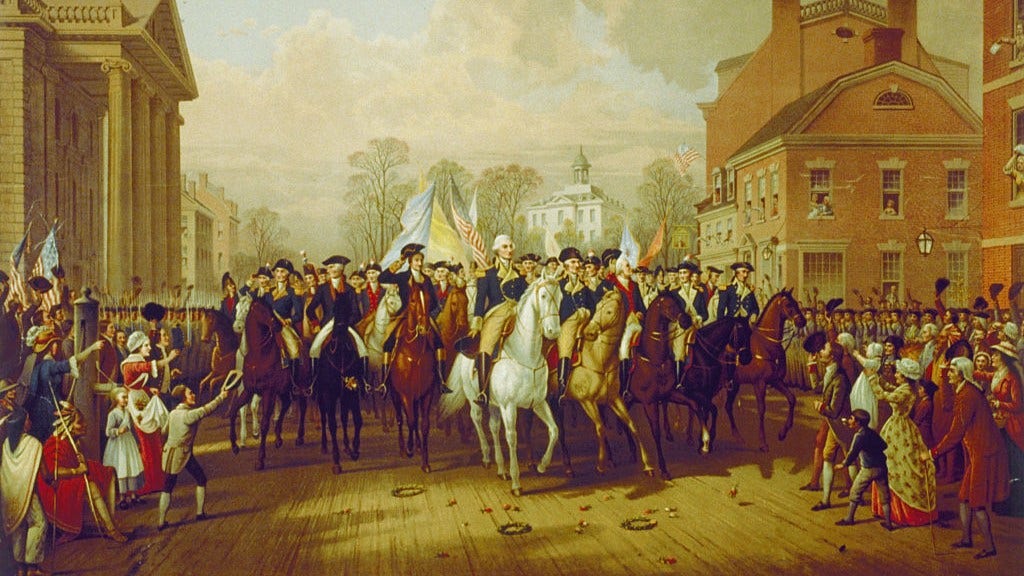Illinois
PBS NewsHour | What to know about a lawsuit against reparations in Illinois | Season 2024 | KQED

Wednesday is Juneteenth, the federal holiday celebrating the Emancipation of Enslaved people in America this year.
It comes amid renewed debate about reparations for the descendants of people who were enslaved and of the victims of Jim Crow laws well into the 20th century In 2021, the Chicago suburb of Evanston, Illinois, became the first US city to offer reparations to black Americans for past housing discrimination.
Now a conservative legal group is challenging the program in court.
Saying it unconstitutionally discriminates against residents who aren’t black Brandis Freedman anchors Chicago tonight on PBS member station W TT W in Chicago.
Brandis give us a little sense of the background of this program who qualifies for it and how much money has been paid out.
Hey, John, So, uh, this you know, came about sometime after 2020.
Of course, I think a lot of folks.
A lot of cities were starting to talk about reparations in a way that they hadn’t in the past.
And so Evanston’s measure, it requires that Who is 18 or older and was a resident of the city of Evanston, between 1919 and 1969.
Or is a descendant of a resident between that same time period.
Um, is eligible to receive the benefit right?
And so the benefits are $25,000 initially $25,000 to go towards housing.
So the first part of the $20 million that the city has pledged is a housing initiative where folks who fit the bill can either make a down payment on a new house.
Or they can, uh, prepares Upgrades to their homes or use that fund or use those funds to pay back.
Uh, if they owe penalties to the city at this point, I think initially some of that roll out was a little bit slow, but I think, um, I approximately 3 million or so has been paid out thus far.
Um, last year, the city also added on to that where, um, the same group of people who meet the requirements, uh, could receive a $25,000 direct cash payment.
Is there much public support for this?
In Evanston?
There is Uh, quite a bit.
You know, Initially, when this was passed, Not everyone was supportive.
Right?
There were some folks who argued that this is not a reparations package that this is, um you know, a package for the mortgage lenders and for the banks, um, and for the city that you know the folks who would actually be receiving those $25,000 And then later on, there was the $25,000 cash payment option.
That was added You don’t hear a lot of opposition in the area.
I think a lot of folks are still kind of waiting to see as that money gets passed out, you know, as it gets distributed to those who Eligible, um, to see the benefit and and how it’s helped them for those who don’t know Evanston describe it for us politically demographically.
Sure, um, so Evanston sits just north of the city of Chicago on what is called the North Shore.
It’s at the bottom edge of the North shore.
Just outside the city.
Some folks call it urban light.
Um, because it’s still you know, a thriving uh, suburb.
Northwestern University is in Evanston.
A politically It’s pretty blue, as is, You know, a lot of Chicago.
Uh, Chicago specific, You know, as you get or Chicago proper, I should say.
Once you get farther and farther out, um the you know it it the the politics start to change color A good bit.
The conservative legal group Judicial Watch is bringing this suit.
What’s their argument, though their argument is, I mean, I I’ve read Reverse racism.
Their main argument is that because the 14th amendment that this that the reparations package is a violation of the equal protection clause of the 14th amendment, because the city of Evanston uses race as a proxy as a determining factor of whether or not someone experienced racism, I, I think you know, some critics of that argument would say the city of Evanston has admitted to its role in racism between the years of 1919 and 1969, as have many cities, whether out loud or not to The Covenant, the restrictive covenants that prevented black people from living in certain neighborhoods.
The redlining that we all know the federal government and the you know, mortgage lenders at the time all participated in that prevented that so that’s that’s their main argument.
The other part is that you know, they believe that the federal government doesn’t have really a compelling interest in making, um, making integration happen.
Um and, uh, the plaintiffs argue that you know that they too should receive.
Um, the $25,000 payment.
Um, and so I think they are asking for an injunction.
Against this legislation.
Is there any sense that the plaintiffs were emboldened by the Supreme Court’s rejection of race?
Aware college admissions, the attorney that I’ve spoken with Christine Svenson?
She’s locally based, but she does work with, uh, a judicial watch.
Yes, that I think that is part of their argument.
They believe that the Supreme Court has said that race can’t be a factor in determining these kinds of things.
And so, yes, they are certainly, uh, leaning on the Supreme Court’s argument, and what’s the city said about the suit.
They’ve been kind of quiet and not responding to Suit itself, which isn’t a huge surprise.
A lot of times when Sudi cities face legal suits like this, they’re prevented from speaking about the suit itself.
But they have said that they defend their legislation and that they are proud to the then you know, the first city in the country to pass a reparations package.
Um, and the failed to defend it for setting the country to pass a reparations.
But also, uh is this gonna be closely watched this challenge?
Absolutely.
It is going to be closely watched because, as you mentioned John, there are other cities even the state of California is considering and looking at how they might be.
Able to implement their own reparations package.
And so I think some folks are keeping an eye on this one just to see what how far this case goes.
And what is decided, Um, and how it might impact others.
Brandis Friedman of Wttw in Chicago.
Thanks very much.
Thank you.

Illinois
Previewing the Illinois high school football state championship games

Top-ranked Loyola’s offense has three primary plays: running with Drew MacPherson, passing to MacPherson and running with quarterback Ryan Fitzgerald.
The key blocker on most of those Fitzgerald runs? MacPherson.
“[MacPherson] has breakaway speed,” Ramblers coach Beau Desherow said. “He’s also a really good receiver. His ability to block isn’t talked about enough. He’s a devastating blocker. He is a totally selfless player that will do whatever it takes to win.”
MacPherson leads Loyola (11-2) in touchdowns (19), rushing yards (1,038) and receiver yards (678). The Iowa recruit will be a major focus of York’s defense in the Class 8A state championship game at ISU’s Hancock Stadium on Saturday at 7 p.m.
On the other side, the key is Bruno Massel. The Dukes’ quarterback may be the fastest in the state. The senior qualified for the Class 3A state track finals last spring in the 100 meters and 4×100 relay, earning a medal in the latter.
Massel vs. Loyola’s stout run defense is the matchup that could decide the game. Mount Carmel and Lincoln-Way East, programs that pride themselves on consistent running attacks, didn’t even attempt to succeed on the ground against the Ramblers this season.
The Griffins called just four rushing plays in the semifinals against Loyola and the Caravan ran nine rushing plays in a Week 9 loss to Loyola.
“We take away the run pretty early,” Desherow said. “Our defensive line has done an amazing job and our linebackers have stepped up. They are players. Max Mendoza had an amazing game [vs. Lincoln-Way East].”
This is the first title game appearance for York (11-2) The Ramblers, Mount Carmel in 7A and Nazareth in 5A are attempting to three-peat and all are favorites.
Batavia’s Nathan Whitwell (28) carries the ball against St. Charles North.
Allen Cunningham/For the Sun-Times
Class 7A: Batavia (12-1) vs. Mount Carmel (10-3), 4 p.m. Sat.
This is a rivalry, but one-sided. Mount Carmel has ended Batavia’s last four seasons.
“The first time was a war,” Bulldogs coach Dennis Piron said. “The last three we had things happen in the first quarter and it got out of hand.”
The Caravan is young overall but has solid veteran leaders on both sides, including quarterback Jack Elliott and linebacker Matt Mucha.
“I’m the head coach but it is Jack Elliott’s team,” Mount Carmel coach Jordan Lynch said “It is not what I’m comfortable with it is what the kids see and what the kids trust. He comes with his own game plan on what we should run.”
Mucha has led the Caravan in tackles the last two seasons.
“Our defense is peaking at the right time,” Lynch said. “Mucha is the best linebacker in the state and will be one of the best players on the field Saturday.”
Batavia’s top weapon is senior running back Nathan Whitewell, who has rushed for 1,669 yards and 27 touchdowns. The Caravan is allowing 22 points a game this season and the Bulldogs’ best chance at an upset may be to get in a high-scoring shootout.

Geneva’s Taylin Taylor (1) catches a pass and turns up field as the Vikings play Batavia.
Allen Cunningham/For the Sun-Times
Class 6A: Geneva (12-1) vs. East St. Louis (12-1), 1 p.m. Sat.
The Flyers dominated Loyola in Week 1 and their only loss was 14-13 to IMG Academy, a prep school powerhouse from Florida. East St. Louis is the best team in the state.
Flyers’ quarterback Kendrick Lyons has thrown for 2,402 yards and 31 touchdowns. Keandre McClendon leads the team with 12 sacks.
Geneva counters with perhaps the most talented player in the state, Georgia recruit Talyn Taylor. The senior wide receiver has scored 27 touchdowns.

Joliet Catholic’s Larry Stringham (24) carries the ball against Mount Carmel.
Kirsten Stickney/For the Sun-Times
Class 5A: Nazareth (11-2) vs. Joliet Catholic (10-3), 10 a.m. Sat.
This could be the best game of the weekend. Nazareth is loaded with stars including quarterback Logan Malachuk and linebacker Gabe Kaminski. The Roadrunners have a special group of receivers in Garrett Reese, Jake Cestone, Trenton Walker and James Penley.
“Kaminski is a four-year starter and an awfully fun kid to watch,” Nazareth coach Tim Racki said. “He plays football the way it is meant to be played.”
The Hilltoppers don’t have a major star, just a lot of experience. It’s a testament to the strength of the program, which is tied with Mount Carmel for the most state titles, that it has advanced to another title game.
“This is probably the toughest schedule that I’ve been around as a coach or when I played here,” Joliet Catholic coach Jake Jaworski said. “We have definitely learned from those three losses.”
Running backs Larry Stringham (14 TDs) and Nate Magrini (13 TDs) lead the Hilltoppers’ attack.

DePaul’s Juju Rodriguez (2) looks to pass during the Rams’ 21-14 semifinal win against Coal City.
Allen Cunningham/For the Sun-Times
Class 4A: DePaul Prep (10-3) vs. Mt. Zion (10-3), 7 p.m. Fri.
The Rams’ Cinderella run to state is the best story of the playoffs. DePaul Prep has a daring offense, led by daring quarterback Juju Rodriguez, running back Nick Martinez and receiver Braden Peevy.
Mt. Zion is a regular playoff contender but this is its first title game as well.

Montini’s Louis Corpora (38) carries the ball against North Lawndale’s Trevion Anderson (21).
Kirsten Stickney/For the Sun-Times
Class 3A: Montini (11-2) vs. Monticello (11-2), 4 p.m. Fri.
Montini’s losses this season are to larger Catholic League powers Marist and Fenwick. The Broncos, led by quarterback Israel Abrams (1,778 passing yards, 24 TDs) are heavy favorites.
Class 2A: Chicago Christian (12-1) vs. Maroa-Forsyth (12-1), 1 p.m. Fri.
The school from Palos Heights led by first-year coach CJ Cesario could have its hands full with the Maroa-Forsyth, one of the state’s traditional small school powers. The Knights’ offense is well-balanced with Christian Flutman throwing for 23 TDs and Kenny Jager rushing for 27.
Illinois
Sangamon County, Illinois State’s Attorney fights pretrial release for Sean Grayson

Watch CBS News
Be the first to know
Get browser notifications for breaking news, live events, and exclusive reporting.
Illinois
LIVE BLOG: Kentucky WBB vs. Illinois

After the game against Arizona State, Kentucky now will wrap up their time in the Music City Classic against No. 19 Illinois. (8 p.m. ET). KSR’s new and improved LIVE BLOG will bring you all the real-time updates you need to keep up with the Cats.
The Fighting Illini are arguably the best team that Kentucky has faced up until this point, so it’ll be interesting to see if the Cats can leave Nashville with a winning taste in their mouths prior to facing No. 16 North Carolina in Chapel Hill.
The game will stream on BallerTV, so if you’re unable to watch, we’ve got you covered. Refresh the feed below for updates and our takes on the game. You can also join the conversation on the KSBoard Game Thread.
11/27/2024 07:17:14 PM
Kentucky is shooting just 35% from the field and 22% from three-point range thus far.
11/27/2024 07:05:55 PM
Not a bad start for the Cats. 11/27/2024 06:57:51 PM
Per the BallerTV broadcast, the Fighting Illini have the longest winning streak in the country with 11 consecutive wins.
11/27/2024 06:40:15 PM
– Georgia AmooreEnd 1Q: 18-14 Illinois
6:05 1Q: 10-5 Kentucky
Illinois has the longest winning streak in the country
Kentucky’s starting lineup
– Dazia Lawrence
– Amelia Hassett
– Teonni Key
– Clara Strack
-

 Science1 week ago
Science1 week agoTrump nominates Dr. Oz to head Medicare and Medicaid and help take on 'illness industrial complex'
-

 Health6 days ago
Health6 days agoHoliday gatherings can lead to stress eating: Try these 5 tips to control it
-

 Health3 days ago
Health3 days agoCheekyMD Offers Needle-Free GLP-1s | Woman's World
-

 Science2 days ago
Science2 days agoDespite warnings from bird flu experts, it's business as usual in California dairy country
-

 Technology2 days ago
Technology2 days agoLost access? Here’s how to reclaim your Facebook account
-

 Science1 week ago
Science1 week agoAlameda County child believed to be latest case of bird flu; source unknown
-

 Sports1 week ago
Sports1 week agoBehind Comcast's big TV deal: a bleak picture for once mighty cable industry
-

 Entertainment19 hours ago
Entertainment19 hours agoReview: A tense household becomes a metaphor for Iran's divisions in 'The Seed of the Sacred Fig'















